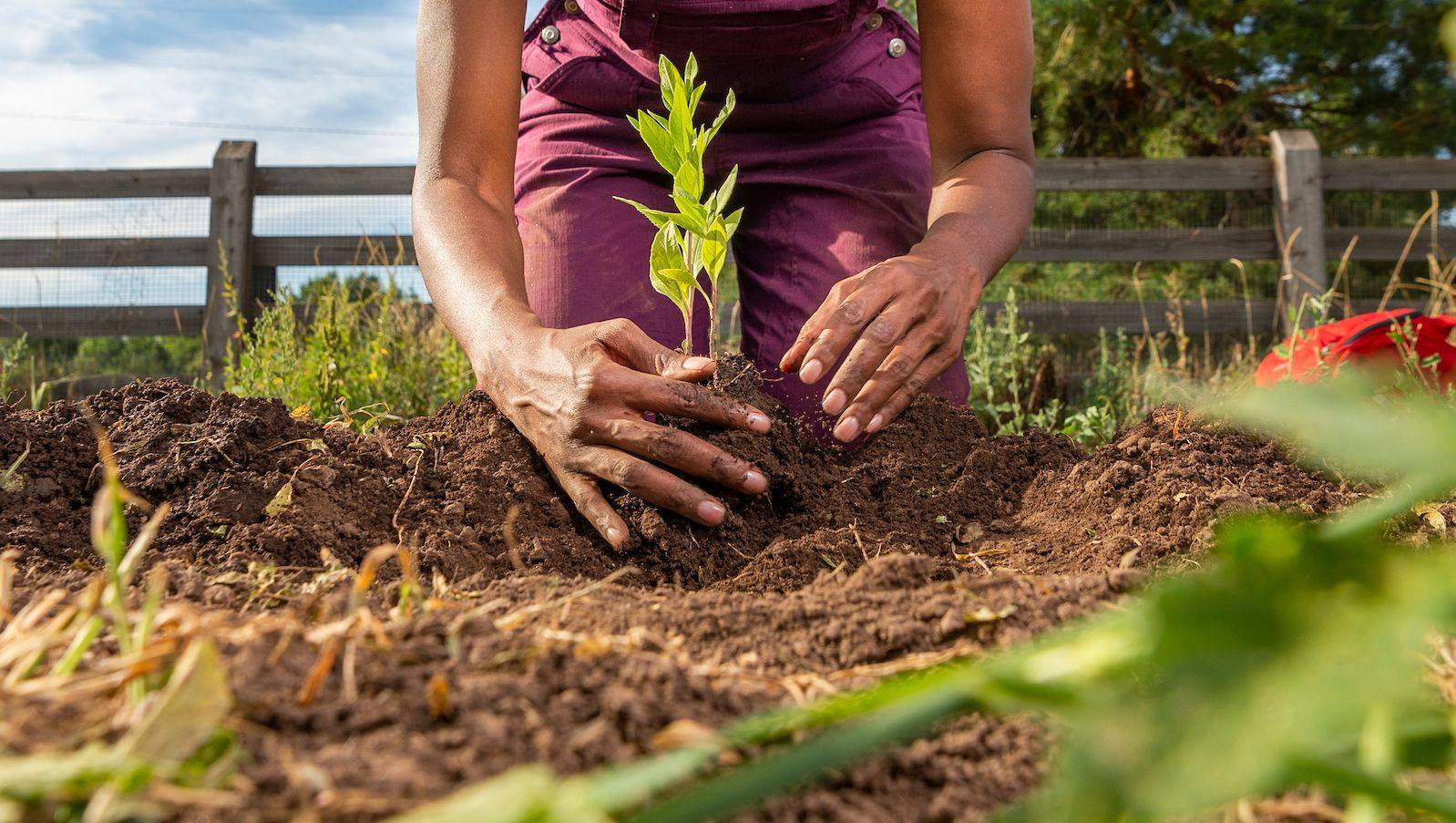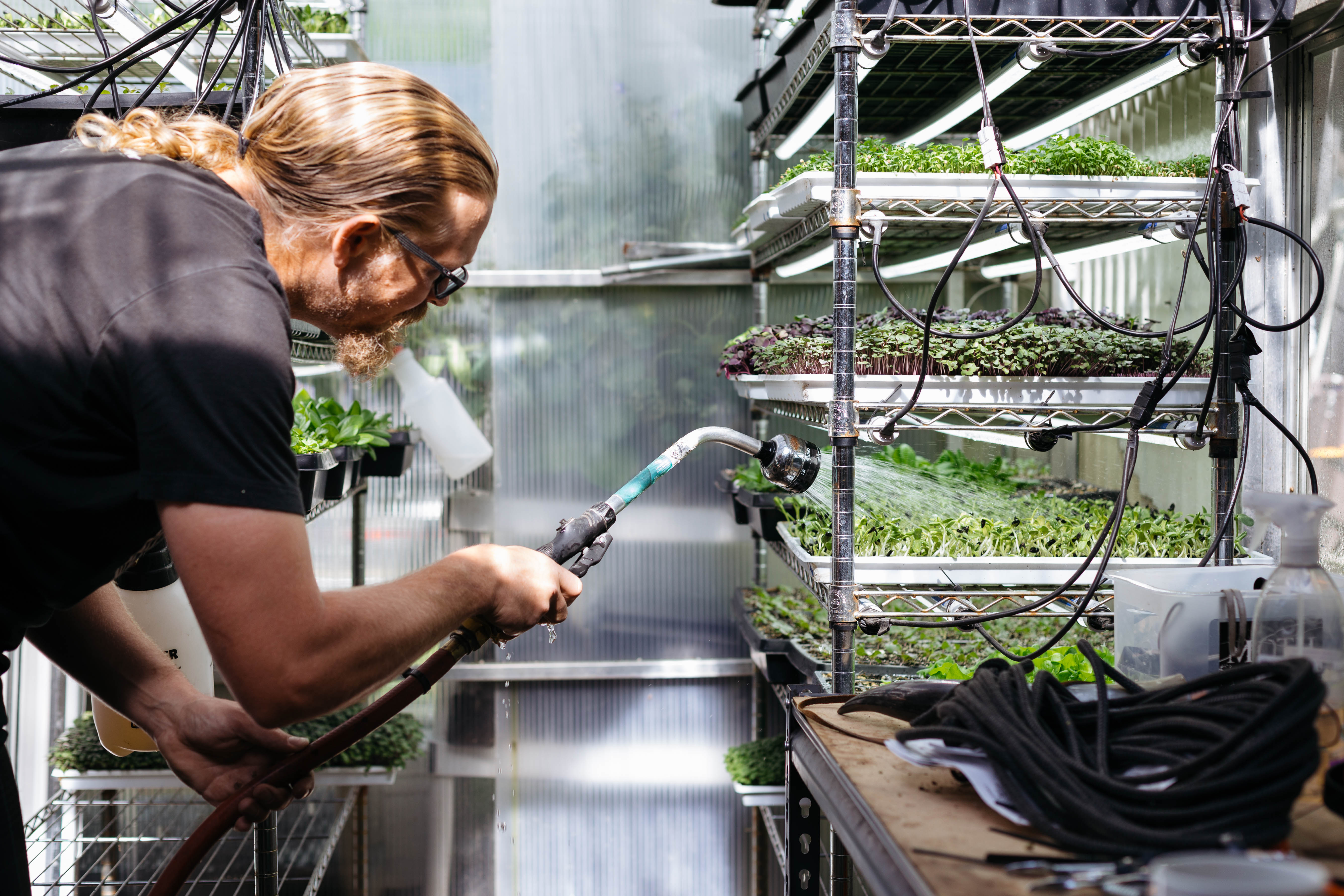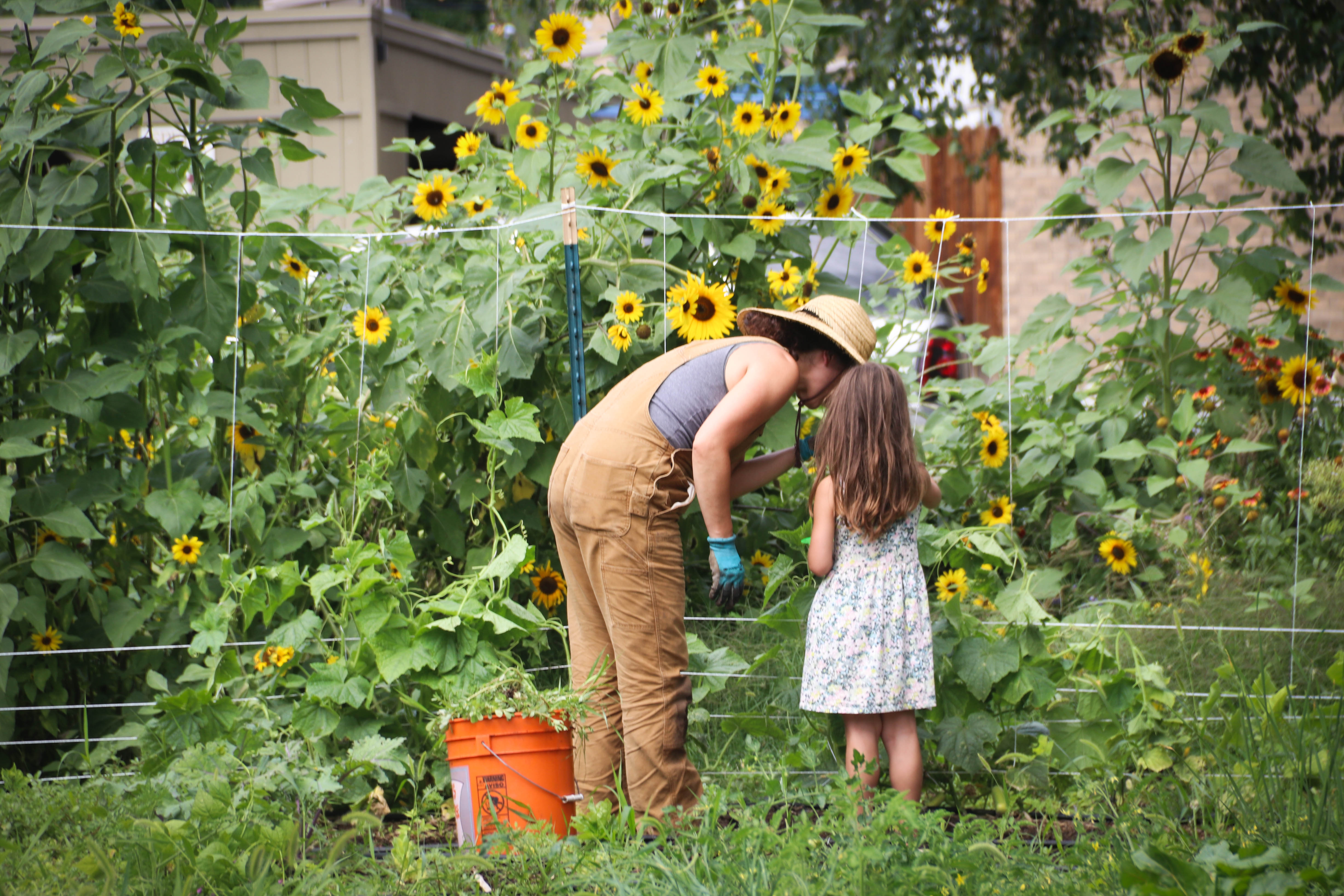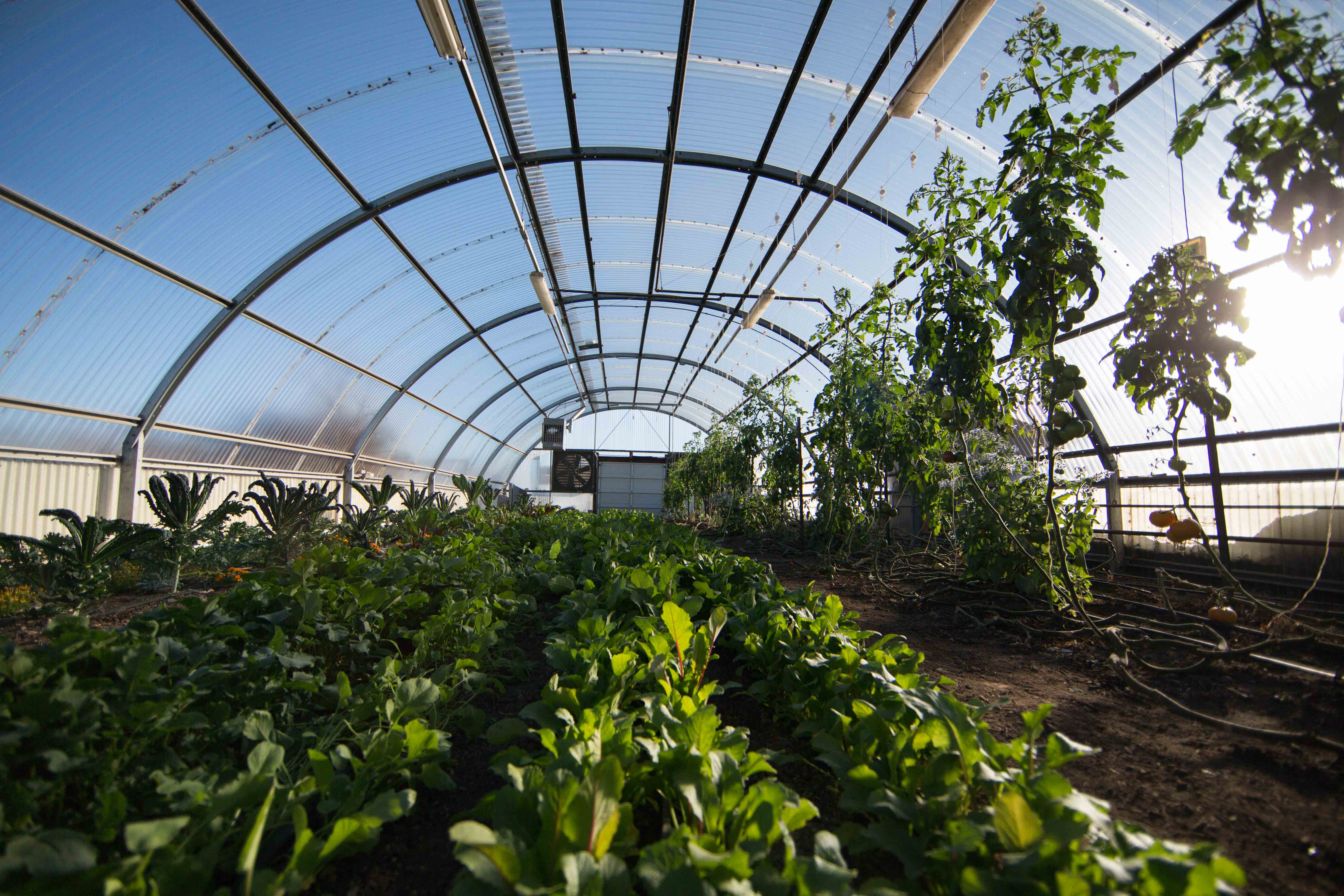Spending more time at home can be great news for your gardening dreams. With some effort, anything from a small patio to a full-blown backyard has the potential to feed you or at least supplement your grocery shopping over the summer. Denver’s growing climate might not be as ideal as wetter locations like Oregon, but it offers a sunny few months where things like tomatoes, hot peppers, zucchini and lettuce thrive. Have you longingly thought about picking fresh basil to put into a cocktail or to top your pasta dish? Now is the time to start planning and prepping so that wish can come true.
In order to help with the daunting task, we reached out to some of Denver’s professional urban farmers to ask about beginner gardening advice and their “pro tips” for starting and maintaining a vegetable patch or garden in your backyard.
If you don’t have a lot of space to grow but like the idea of learning to farm, you can always check out local Community-Supported Agriculture (CSA) programs that offer work exchanges or sign up for a CSA share that will deliver fresh produce to you all season long.
Location, Location, Location
The first step a gardener must take is mapping out their land (or patio). “Mapping” includes determining how much sun each area receives throughout a day, testing the soil if you are planting directly into the ground and choosing your plants. It also includes deciding whether you will create a raised bed, plant in planters or containers or directly into the ground.
Sun is perhaps the most important factor when mapping your space because it rarely can be changed. Chris Starkus, the man behind Urban Farmer, and his wife Diana Lopez Starkus started Lost Creek Micro Farm in Lakewood in 2017. They advise that in order to determine your sun exposure, you should observe the space and categorize it into shade, partial shade or full sun. Full sun generally means that it needs to receive at least six hours of uninterrupted light. It’s also important to note the time of day that sun exposure happens, as noon light is much hotter than early morning or evening rays.
READ: Urban Farming with Chef Starkus at Lost Creek Micro-Farm
The Starkus family recommends getting a sample of your soil tested by one of the local nurseries. This test gives you the knowledge to amend the soil with the correct amount and type of fertilizer.
Choosing Plants and Sourcing Seeds
Before finishing the map of your garden, you’ll have to decide which plants you want or are able to grow, given your sun exposure and soil composition. Plants are classified as either perennials or annuals, with perennials coming back to grow every year if taken care of properly (like rhubarb) and annuals only lasting one growing season (like carrots).
Brien Darby, the manager of urban food programs at the Denver Botanic Gardens mentioned that “most of the vegetable plants we are familiar with are annuals.”
The next step is deciding whether you want to source seeds or starters. Growing a plant from seed certainly takes longer and requires more vigilance than buying a starter at a nursery. It also requires the knowledge of whether or not the plant should be direct-sown* (planted directly into the ground) or transplanted*, according to Darby. “If you aren’t set up to grow plants indoors [to start], it’s best to purchase the plants for your garden.”
But, if you plan to purchase starters rather than seeds, you’ll have to wait until the end of April or beginning of May until the warm season plants appear. Darby mentioned that the Denver Botanic Gardens will offer a virtual plant sale with online shopping and payment and curbside pickup if you can’t make it to one of the local nurseries in person.
If you are the adventurous type and want to start everything from seed, Chris and Diana offered a list of their favorite seed suppliers including Seeds Trust, Row 7, Baker Creek, Johnny’s Seed and Wild Garden Seed. They also mentioned that sourced seeds should be “open-pollinated and non-GMO” whenever possible to promote ecosystem health.
Joshua Olsen, the farmer who turned a piece of urban land into a full-scale farm called ACRES at Warren Tech, believes firmly in the power of companion planting — or growing two plants near each other that don’t compete and might even help each other. A good example of that is the flower nasturtiums next to tomato plants, which help with pest control.
Although the exact timing for when to plant outside in Denver varies every year, the Starkus family uses this as a general rule of thumb: plant after Mother’s Day. Olsen agreed and mentioned that ACRES usually plants summer crops in late May or even early June.
*Direct-sown plants for Denver: peas, root vegetables (carrots, beets, radishes, parsnips), quick growing salad greens, corn, beans, squash, pumpkins, melons
*Transplanted plants for Denver: tomatoes, peppers, eggplants, tomatillos, broccoli, cauliflower, cabbage, collard greens, kohlrabi, herbs
Keeping Your Soil Healthy

Soil health is imperative to a vibrant vegetable patch or flower garden. If you want to get studious about it, check out this website for a soil survey of your area and this article that explains the main six soil groups.
If those are too intense right now, Darby offered a simple piece of advice. “The best vegetable garden soil is loose (not compacted) and high in organic matter. If you are starting a new garden, you’ll probably need to till or double dig the soil and mix in compost.”
Chris and Diana mentioned that most annuals only need about six to 12 inches of soil depth to successfully grow. In Denver, that is important because most of the soil is highly compacted and therefore unsuitable for growing vegetables. By double digging the top layer, you will break up the compacted soil and offer your plants room to breathe. Just be wary of breaking up the soil too much, as that can interfere with the rich biology of microorganisms necessary for soil health.
Olsen spoke about the next steps after preparing the soil. He insisted that fungi are “essential to soil biology,” and spent mushroom compost or mycorrhizae inoculant are great to add when transplanting or prepping beds for seeding. After planting, he recommends feeding your garden every two weeks or so with natural fertilizers.
Watering

After all the planning, mapping and planting, the most important activity for the rest of the season will be watering your garden. Watering is a Goldilocks situation, where you have to figure out just the right amount to see your garden thrive because both too little and too much can threaten the plants.
Don’t let that scare you. Denver’s climate is arid and sunny, leading to dry soils and thirsty plants. Darby said, “when temperatures are cooler, you can usually get away with watering every other day… when temperatures are hotter, you will probably need to water every day. When watering, plan on deeply soaking the soil. This will help roots to grow deeper into the soil.”
Urban Farm Company, a garden installing business serving the Front Range, offers this great resource for Colorado watering guidelines, as well as a lot of other services for home gardeners of all levels.
At Lost Creek Micro Farm, Chris and Diana said “when we first started growing food [here], we underestimated the need to consistently water — especially for seedlings. A good hack to keep moisture in the soil is to shred newspaper and use it as mulch.” If you aren’t planning on staying at home all summer, make sure to prepare for someone else to water your garden while you’re away. “Promise your helper a ‘share’ or make them a jar of salsa from your hot pepper harvest” Diana and Chris offered, as payment for asking a friend to take on the duty.
General Garden Health

These are the things that all the farmers we asked agreed on when it comes to maintaining the overall health of your garden or small farm.
- Plant flowers alongside the vegetables to attract pollinators and add to the aesthetics
- Stick to your watering schedule strictly
- Mulch the walkways around your beds or insert stepping stones so you don’t compact the soil while weeding, picking or planting
- Look for ways to “close the loop” between your house and the garden, like using crushed eggshells mixed into the soil to help tomatoes grow (that particular example came from Chris and Diana)
- Be patient, especially at the beginning. If you want a functional and beautiful garden, it will take time.
—
If you have more specific gardening questions, you can always ask via the Gardening Help page on the Chatfield Farms website here.






Hi Cori! Interesting post! Thanks for sharing such a good blog. All the tips you have shared are very useful, especially “watering”. Watering is a Goldilocks situation, where you have to figure out just the right amount to see your garden thrive because both too little and too much can threaten the plants. Keep posting.
Great Ideas